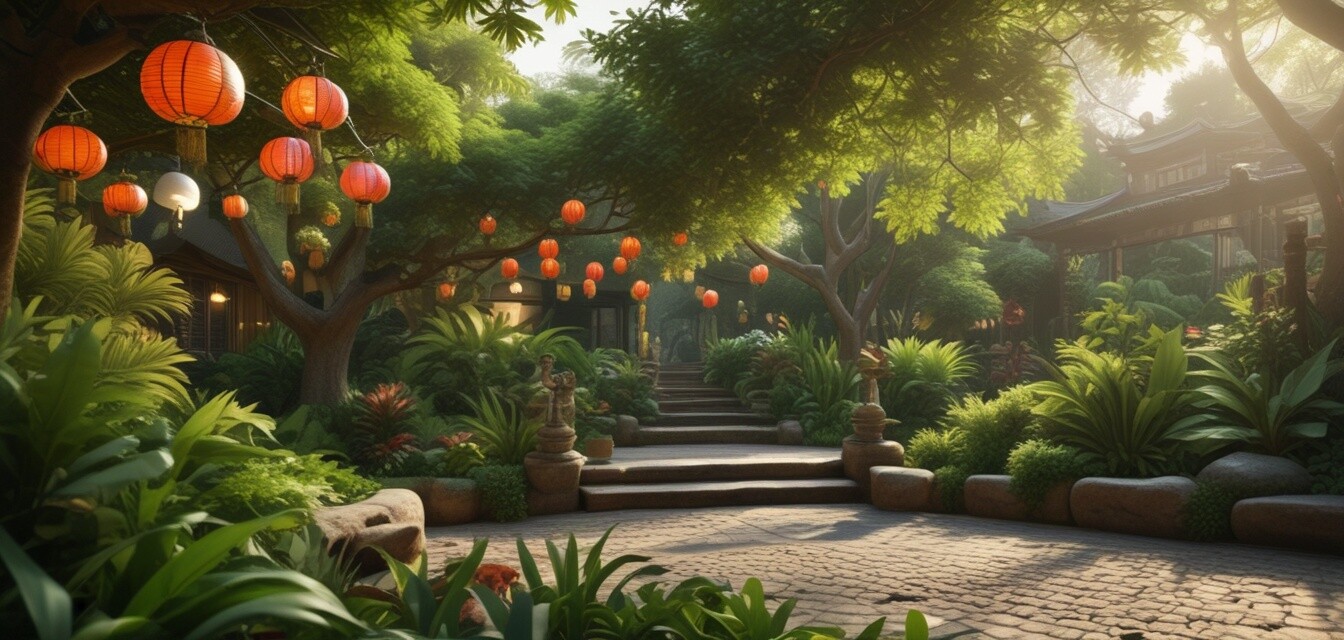
Cultural Influences on Garden Design
Key Takeaways
- Cultural influences can greatly enhance the aesthetic and functionality of garden spaces.
- Incorporating elements from various traditions fosters diversity and creativity in your garden design.
- Understanding the principles behind diverse garden styles can improve your landscaping decisions.
Garden design is more than just planting flowers and shrubs; it’s a reflection of cultural values and traditions. As homeowners and gardening enthusiasts look to beautify their outdoor spaces, they often find inspiration from various cultures around the world. In this article, we will explore how different cultural influences can shape garden designs and provide tips on incorporating these elements into your own space.
Exploring cultural influences
Throughout history, gardens have served as serene retreats, functional farming spaces, and striking entertainment venues. Cultures around the globe have contributed distinct elements and philosophies that can guide and inspire your garden design. Below are some notable cultural styles that can enrich your garden:
| Culture | Key Elements | Design Philosophy |
|---|---|---|
| Japanese | Zen gardens, water features, ornamental stones | Harmony with nature and simplicity |
| Italian | Formal layout, terraced gardens, classical sculpture | Order and elegance |
| Chinese | Balance of elements, symbolic plants, winding paths | Unity and balance of nature |
| Spanish | Ceramic tiles, Mediterranean herbs, water features | Vibrancy and boldness |
| Tropical | Lush foliage, vibrant flowers, natural materials | Exotic abundance |
Japanese gardens: The art of tranquility
Japanese gardens emphasize minimalism and tranquility. Traditional Zen gardens feature gravel, rocks, and minimal vegetation, encouraging contemplation and meditation. When creating a Japanese-inspired garden, consider including:
- Raked gravel or sand to represent water
- Ornamental stones arranged to symbolize mountains
- Water features like koi ponds or small streams
- Plants such as bamboo, cherry blossoms, and other native species
Italian gardens: Where elegance meets symmetry
Italian gardens are characterized by their formal layouts, geometric shapes, and abundant sculptural elements. The classic Italian garden offers a luxurious feel while maintaining meticulous order. To incorporate Italian design into your space:
- Create symmetrical pathways and hedges.
- Introduce fountains and statues as focal points.
- Plant formal rows of cypress or boxwood.
Chinese gardens: A balance of nature
Rooted in philosophy, Chinese gardens reflect the importance of balance. These gardens often incorporate symbolism through plants and design elements. To achieve a Chinese garden aesthetic, consider adding:
- Rock formations to represent stability and permanence
- Pavilions for social interaction and relaxation
- Plants with significant cultural meanings, such as lotus and plum blossoms
Spanish gardens: Colorful and lively
The Spanish garden is known for its vibrant colors, fragrant herbs, and artistic tiles. It often blends functional and aesthetic elements, creating a lively outdoor space. You can add Spanish influences by:
- Incorporating ceramic tiles for borders and patio areas.
- Planting Mediterranean herbs like rosemary and thyme.
- Adding water features, such as fountains or reflecting pools.
Tropical gardens: Embracing abundance
Full of vibrant colors and lush foliage, tropical gardens evoke a sense of paradise. Designing a tropical garden involves utilizing a diverse range of plants. Consider these tips for creating a tropical oasis:
- Choose an assortment of tropical plants such as hibiscus, palm trees, and ferns.
- Incorporate natural materials like bamboo and stone.
- Design shaded seating areas surrounded by lush greenery.
Bringing cultural elements to your garden
Incorporating cultural influences into your garden design is an exciting opportunity to express your creativity and style. Here are some tips for successfully blending these elements:
Tips for blending cultures
- Research different garden styles that resonate with you.
- Combine elements from various cultures for unique designs.
- Focus on plants that thrive in your climate.
- Consider the materials used for paths, fences, and furniture.
- Prioritize harmony by ensuring your design flows naturally.
Conclusion: Create Your Cultural Haven
Creating a culturally influenced garden not only enhances its beauty but also tells a story that resonates with you and your visitors. By incorporating various cultural elements, you can develop a unique space that reflects both the beauty of nature and your personal style. Explore our Garden Inspiration category for more ideas and tips to elevate your outdoor space.
Pros
- Diverse aesthetics that enrich your garden experience.
- Reflects personal style and values.
- Encourages creativity and diversity in planting.
Cons
- May require specific maintenance based on plant types.
- Potential for design clash if not executed thoughtfully.
Ultimately, drawing inspiration from various cultures invites engagement and exploration in your gardening journey. Let your garden be a reflection of the world around you, blending traditions and designs that resonate with your personal flair.